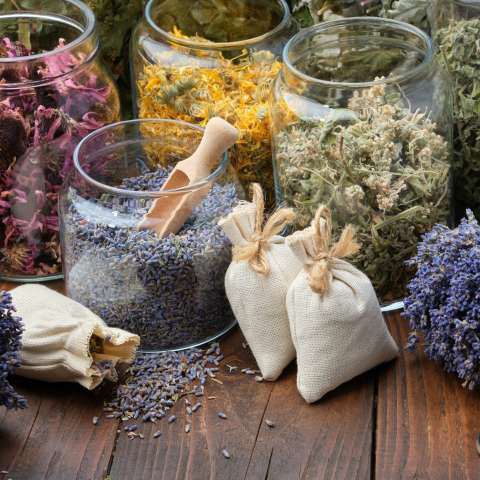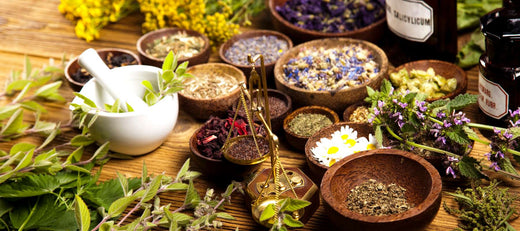Peppermint isn’t just for Candy Canes!
Did you know that peppermint has been historically used to calm stomach ailments and nausea? It has also been shown to assist with headaches, burn relief, and insect bites.
The great news? You can grow peppermint yourself and reap its delicious benefits right from your own garden! You probably already grow other herbs for their culinary purposes... Basil, Oregano, and Sage are just a few common herbs that not only flavor our favorite dishes, but can also serve in a homeopathic capacity when needed.
If you’re wanting to branch out to more medicinal and perennial herb plants, here

are some great options:
- Lemon Balm and Lavender are hearty plants that return every year in most U.S. growing zones. They’ll make a wonderful calming tea and help support the pollinators in your garden.
- Beautiful Calendula flowers can be grown for their anti-inflammatory and antiseptic properties in your homemade salves.
- Echinacea (commonly known as coneflower) is a wonderful perennial that can be used to boost immunity.
- Holy Basil is so easy to grow and is one of the beloved adaptogen herbs so many people depend on for regulating stress and fatigue.
Wanting to expand your backyard apothecary? Let’s grow Horehound for cough drops, Wormwood for an anti-parasitic, and Hyssop for improving respiratory issues. The added bonus is all of these flowering herbs are LOVED by pollinators too.
Herbs are some of the most beginner-friendly, low-maintenance plants that you can grow. Growing your own medicinal herbs can be done in small gardens and containers in many cases. Some plants require more space and some must be considered for invasiveness before you decide where to plant them. All of the seeds for plants mentioned in this article are available in our Ultimate Medicinal Herb Seed Collection of 36 medicinal herb varieties.
In addition to the herbs we already mentioned, this herb garden seed collection also contains: Anise, Bergamot, Black Cumin, Catnip, Cayenne Pepper, German Chamomile, Curled Chervil, Fennel, Feverfew, Hoary Stock, Lamb's Ear, Lovage, Marigold, Marsh Mallow, Mugwort, Mullein, Common Plantain, Common Purslane, Borage, Stinging Nettle, Toothache Plant, Valerian, and White Yarrow.
Once you have medicinal herbs to harvest, you can start drying some for teas, making tinctures (strong herbal extractions in alcohol), adding beneficial plants to salves, and more!
Please remember that these plants are medicine and should be used with care. If you are unfamiliar with any herb, research its uses and safety information before application or ingestion.
























